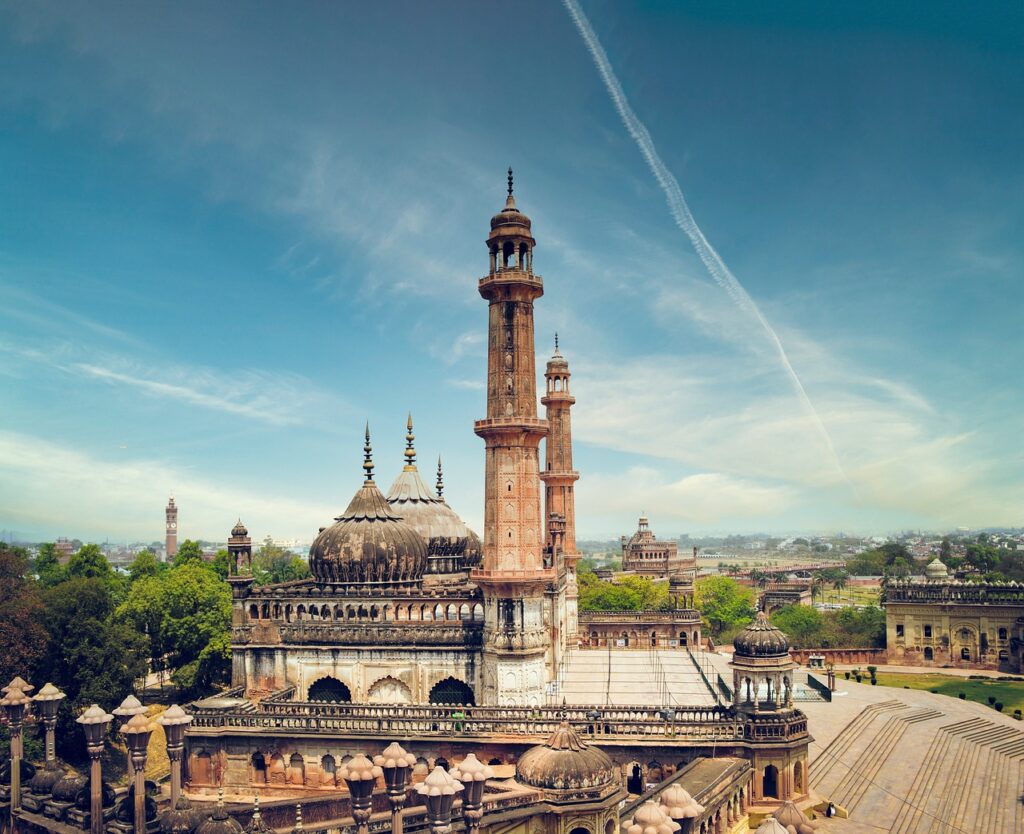Bada Imambada(Lucknow)
The Bara Imambara, an architectural gem nestled in the heart of Lucknow, Uttar Pradesh, stands as a testament to the grandeur of the city’s historical and cultural heritage. Commissioned by Nawab Asaf-ud-Daula in 1784, this imposing structure is renowned as one of the largest imambaras globally, boasting an intricately designed central hall that is a marvel of Mughal architecture. What sets the Bara Imambara apart is its colossal construction, notable for the absence of supporting beams or pillars within the expansive hall, creating a vast and awe-inspiring space. Beyond the main edifice, the complex includes the enigmatic Bhool Bhulaiya, a labyrinthine network of narrow passages and staircases that captivates the imagination of visitors.



Bada Imambada was commissioned by Nawab Asaf-ud-Daula in 1784 during the Mughal era. Nawab Asaf-ud-Daula, the fourth Nawab of Awadh, undertook the construction of this imposing structure as a relief effort during the famine of 1784, providing employment to the masses. The complex comprises three main structures – the Asfi Mosque, Bauli, and the central hall, which is one of the largest arched constructions without the support of beams or pillars.
Architectural Marvel:
The grandeur of Bada Imambada lies in its architectural brilliance. The main hall, known as the Bara Hall or the Hall of Public Audiences, is an architectural marvel with a length of 50 meters, a width of 16 meters, and a height of 15 meters. What sets it apart is its massive arched ceiling, known as the ‘Shahi Baoli,’ which is a self-supporting structure without any beams or pillars. The uniqueness of this construction technique adds to the awe-inspiring nature of Bada Imambada. The Asfi Mosque, a part of the complex, is equally captivating with its intricate carvings, domes, and minarets. The surrounding gardens, known as the ‘Asifi Bagh,’ provide a serene backdrop to the majestic structures, making Bada Imambada a perfect blend of architectural brilliance and natural beauty.



Cultural Significance:
Bada Imambada holds immense cultural significance, not just for the residents of Lucknow but for the entire country. The complex hosts various events and celebrations, especially during Muharram, attracting people from different communities. The annual observance of Muharram at Bada Imambada includes processions and rituals that commemorate the martyrdom of Imam Hussain, the grandson of Prophet Muhammad. The complex also serves as a venue for various cultural and artistic events, showcasing the vibrant heritage of Lucknow. The integration of religious and cultural activities at Bada Imambada reflects the inclusive ethos of Awadh, where different communities coexist and celebrate their diversity.
Preservation Efforts:
Over the years, Bada Imambada has faced the challenges of weathering and degradation. However, concerted efforts by the Archaeological Survey of India (ASI) and other conservation organizations have been underway to preserve and restore this architectural masterpiece. Preservation initiatives not only focus on the physical restoration of structures but also include efforts to promote awareness and education about the historical and cultural significance of Bada Imambada.

